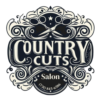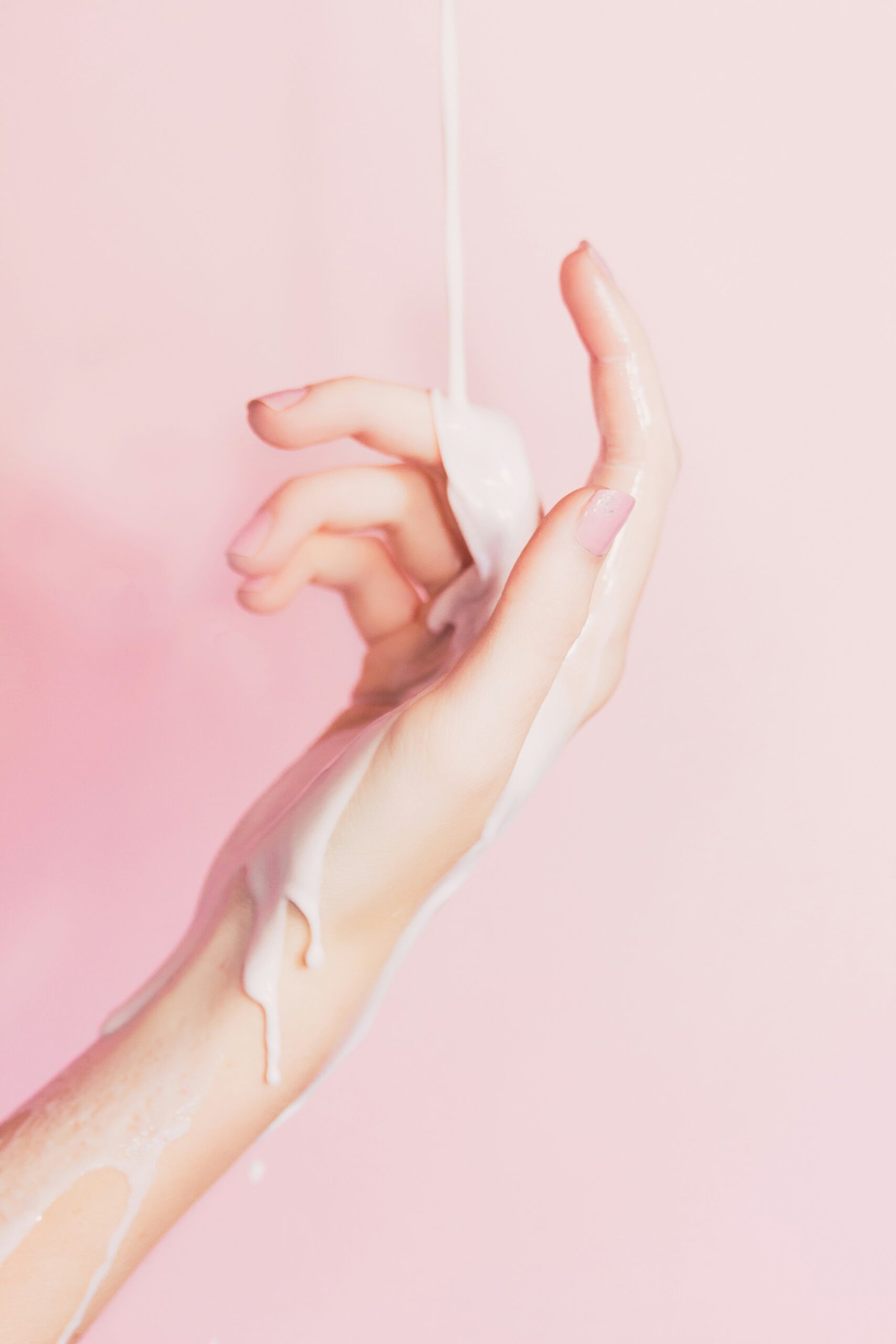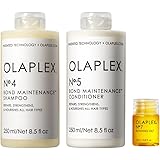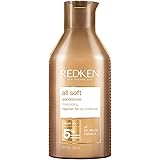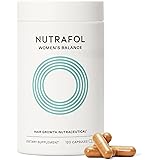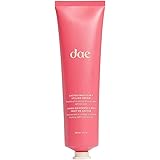Introduction to Nail Care
Nail care is an essential aspect of personal hygiene that is often overlooked. Many individuals underestimate the significance of taking proper care of their nails, believing that it is merely a cosmetic concern. However, nail health is closely linked to overall well-being, as the condition of one’s nails can reflect internal health and hygiene practices. Healthy nails not only have an aesthetic appeal but also serve as a protective barrier against various infections.
Common misconceptions about nail care abound. For instance, some people assume that nails require little attention beyond occasional trimming and polish application. This viewpoint can lead to neglecting underlying issues such as nail fungus, brittleness, or hangnails, all of which can pose health risks. Proper nail care encompasses more than just a polished appearance; it involves routine checks, maintaining cleanliness, and ensuring that the nails do not harbor bacteria or debris.
Moreover, regular nail care can result in substantial benefits. For starters, well-maintained nails can improve one’s confidence and enhance overall appearance. People are often judged by their first impressions, and healthy nails can contribute positively to that. Additionally, establishing a nail care routine can lead to early detection of potential problems. For instance, sudden changes in nail color, shape, or texture may signal underlying health issues that require attention.
In light of these factors, it is clear that prioritizing nail care is not just a matter of vanity; it is integral to one’s overall health. By debunking the misconceptions surrounding nail care and understanding its benefits, individuals can be more equipped to maintain healthy nails, thereby supporting their hygiene and well-being.
Understanding Your Nails
Nails are intricate structures made primarily of a protein called keratin, which is the same substance that composes hair and the outer layer of skin. Each nail comprises several parts, including the nail plate, nail bed, cuticle, and the matrix, which is the tissue underneath the base of the nail. The visible portion of the nail is the nail plate, which serves as a protective barrier for the underlying nail bed, a sensitive area rich in blood vessels and nerves.
The cuticle acts as a protective seal, preventing infections and contaminants from entering the area where the nail grows. The matrix, located beneath the cuticle, plays a vital role in nail growth as it produces new cells that form the nail plate. As these new cells form, they push older cells forward, which is why nails grow outwards. Normally, fingernails grow at an average rate of about 1/8 inch or 3 mm per month, whereas toenails grow more slowly. Factors such as age, diet, and overall health can influence the growth rate and condition of nails.
Understanding the anatomy of your nails is crucial for maintaining nail health. Various factors can adversely affect nail health, including nutritional deficiencies, environmental stresses, and improper care techniques. For example, a lack of essential nutrients such as iron, biotin, and vitamins can lead to brittle or discolored nails. Additionally, excessive exposure to water and harsh chemicals can weaken the nail structure. By being aware of these elements, one can take proactive steps to bolster their nail health and make informed choices about nail care products and routines.
Essential Nail Care Tools
Nail care is an integral part of personal grooming, and having the right tools can significantly enhance the health and appearance of your nails. Understanding the functions of essential nail care tools will help you achieve optimal results and maintain the integrity of your nails. Here, we delve into some of the most important tools you should consider adding to your nail care arsenal.
First and foremost, nail clippers are crucial for keeping your nails trimmed and manageable. Available in various sizes and shapes, choose a clipper that fits comfortably in your hand. A straight-edge clipper is often recommended for cutting fingernails, while a curved clipper may be better suited for toenails. To avoid splitting or tearing, clip your nails straight across and follow up with a file to smooth the edges.
The next vital tool is the nail file. It comes in various types—emery boards, glass files, and metal files—each serving a different purpose. Emery boards are perfect for everyday use, while glass files provide a smooth finish that minimizes nail damage. Always file in one direction rather than back and forth to maintain the nail’s strength.
Cuticle pushers are indispensable for maintaining a neat appearance around the nail bed. When used correctly, they can help push back the cuticles without causing damage. Apply cuticle oil prior to pushing back to soften the skin and make the process more gentle.
Lastly, a nail buffer is an excellent tool for achieving a polished, glossy finish. Buffing your nails gently enhances their shine and can help even out ridges. It is important to use the buffer sparingly, as excessive buffing can weaken the nails. By utilizing these essential nail care tools properly, your nails can remain healthy and visually appealing.
Nail Strengtheners: Why You Need Them
Nail care is a fundamental aspect of personal grooming, and incorporating nail strengtheners into your routine can significantly promote healthier nails. Nail strengtheners are specially formulated products designed to enhance the integrity of your nails, reducing brittleness and breakage. They serve as a protective barrier, often containing ingredients such as keratin, calcium, and other nourishing agents that contribute to stronger and healthier nail growth.
There are various types of nail strengtheners available on the market, each tailored to different nail conditions. For instance, if your nails are prone to peeling, a nail hardener containing formaldehyde could be beneficial. Conversely, for nails that are weak and break easily, a nourishing treatment enriched with oils and vitamins may be more effective. Recognizing the specific needs of your nails can aid in selecting the appropriate product.
When it comes to choosing a nail strengthener, it is crucial to assess your individual requirements—whether you are dealing with thin, splintered, or brittle nails. Moreover, look for products that boast a well-rounded formulation, ideally those that hydrate while reinforcing nail structure. Always remember to read user reviews as they can provide insight into the efficacy of various products.
It’s also important to understand the distinction between bases and topcoats in nail care. Base coats act as a foundation layer that adheres to the nail and prepares it for color application, while topcoats seal the color, providing a glossy finish and extending the life of your manicure. Some products combine both roles, offering strength and protection to your nails simultaneously. Therefore, integrating a suitable nail strengthener as part of your nail care regimen can lead to visibly healthier nails, reinforcing both appearance and resilience.
Choosing the Right Nail Polish
When it comes to nail care, selecting the right nail polish plays a critical role in maintaining healthy nails. Many conventional nail polishes contain harmful chemicals such as formaldehyde, toluene, and dibutyl phthalate (DBP), which can lead to weakened nails and other adverse effects. To promote nail health, it is advisable to choose polishes that are free from these toxic ingredients. Instead, look for options labeled as “3-free,” “5-free,” or even “10-free,” indicating the absence of some of the most concerning chemicals.
In addition to being nontoxic, quality nail polish often contains nourishing ingredients that can help strengthen the nails. Many brands are now formulating their products with vitamins, such as Vitamin E, and other beneficial components that support nail health while adding color and shine. When selecting nail polish, consider not only the color and finish but also the brand’s commitment to safety and quality.
To achieve the best results while applying nail polish, it is important to prepare the nails properly. Start by ensuring nails are clean, dry, and free from any old polish. It is recommended to use a base coat, which not only helps with adhesion but also serves as a protective barrier against potential staining from darker colors. When applying the nail polish, use thin coats and allow each layer to dry completely before adding another. This technique can enhance both the longevity and appearance of the polish.
When it comes time to remove the polish, opt for acetone-free removers, which are gentler on the nails and skin. Additionally, avoiding excessive rubbing during removal can prevent unnecessary wear and tear on the nail surface. By choosing quality, nontoxic nail polishes and following best practices for application and removal, you can maintain the health and beauty of your nails.
Cuticle Care Products
Taking care of the cuticles is an essential aspect of achieving overall nail health. The cuticle, the thin layer of tissue that protects the nail bed and promotes nail growth, requires proper care to prevent damage and infection. Neglecting cuticle care can lead to hangnails, infections, and may inhibit nail growth. Therefore, utilizing high-quality cuticle care products is crucial for maintaining both healthy cuticles and nails.
Cuticle oils are among the most popular products for cuticle care. These oils are often formulated with nourishing ingredients such as jojoba oil, almond oil, or vitamin E, which help to moisturize and soften the cuticles. Regular application of cuticle oil can prevent dryness and brittleness, rendering the cuticles more pliable and promoting healthier nail growth. It is effective to apply cuticle oil after washing hands or using hand sanitizers, as these can strip natural oils, leaving cuticles vulnerable.
In addition to oils, cuticle creams provide a thicker, more intensive moisturizing solution. These creams usually contain a blend of emollients and occlusive agents, designed to deeply hydrate and protect the cuticles. Users may find that applying cuticle cream before bed allows for overnight repair while minimizing the risk of damage during daily activities. Moreover, some cuticle creams come infused with vitamins and essential oils that further enhance the health of the nail and cuticle area.
Cuticle removers are another important component of cuticle care. These products are designed to safely dissolve excess cuticle tissue without causing harm to the surrounding skin. It is vital to use these removers sparingly and according to instructions to avoid irritation. Regular use can help keep the nail area tidy, resulting in a well-groomed appearance and facilitating better manicure results.
Moisturizers and Nail Care
Maintaining healthy nails extends beyond simple trimming and polishing; it includes the vital practice of moisturizing both the nails and the surrounding skin. Adequate hydration plays a crucial role in preventing nail brittleness and breakage, as hydrated nails are more flexible and less prone to damage. Incorporating moisturizers into your nail care routine is essential for achieving and maintaining optimal nail health.
There are various types of moisturizers recommended for effective nail care. Hand creams, cuticle oils, and lotions specifically designed for nails can significantly enhance hydration levels. Hand creams enriched with ingredients such as shea butter, glycerin, or aloe vera can provide deep moisture to your hands and nails. These components work together to lock in moisture and create a protective barrier, which helps combat dryness and peeling.
Cuticle oils are another excellent option for nourishing the delicate skin around the nails. Formulated with natural oils, such as jojoba, almond, or vitamin E oil, they provide essential fatty acids that soothe and soften the cuticles. Regular application of cuticle oil not only hydrates the surrounding skin but also encourages healthy nail growth by preventing hangnails and irritation.
To effectively incorporate moisturizers into your nail care regimen, aim to apply them daily, particularly after washing your hands or exposing them to harsh conditions. Massaging the moisturizer into your nails and cuticles enhances blood circulation, further promoting nail health. Additionally, consider establishing a nighttime routine where you apply a heavier cream or oil before bed, allowing for deep penetration during sleep.
In conclusion, prioritizing moisture in your nail care routine is essential for maintaining healthy and strong nails. Exploring various types of moisturizers and oils will enable individuals to find the perfect combination for their unique needs, ensuring nails remain in optimal condition.
Best Practices for File Usage
Nail filing is an essential aspect of nail care that requires the right techniques and tools to maintain healthy nails. Various types of nail files are available, each designed for specific purposes. Typically, nail files are categorized into three main types: emery boards, glass files, and metal files. Emery boards are versatile and generally used for natural nails, while glass files offer a smoother finish and are particularly beneficial for fragile nails. Metal files, though effective, should be used with caution as they can cause damage if not handled properly.
To achieve optimal results when filing nails, it is crucial to follow proper filing techniques. Begin by selecting a suitable file for your nail type. Hold the file at a 45-degree angle to your nail edge and gently glide the file in one direction rather than back and forth. This technique minimizes heat and friction, reducing the risk of splitting or breaking the nails. It is also advisable to file your nails after a shower or bath when they are softened, which provides a more manageable filing experience.
Preventing nail damage during filing is paramount. Start by ensuring that your nails are clean and free of any polish to better assess their condition. Avoid excessive filing, as this can weaken the nail structure over time. Additionally, regularly replacing worn-out files is vital; a frayed file can create uneven edges and lead to snagging. Establish a routine to check the quality of your files and adapt your filing techniques as needed. Listen to your nails and adjust your approach if you notice signs of vulnerability. By observing these best practices, you can maintain the health and integrity of your nails through efficient and careful filing methods.
Understanding Nail Growth Cycles
Nail growth cycles are a fundamental aspect of maintaining healthy nails. Understanding these cycles allows individuals to tailor their nail care routines effectively, leading to aesthetically pleasing and healthier nails. Each person’s nails grow at a unique rate, influenced by various factors such as age, genetics, and overall health. On average, fingernails grow at a rate of approximately 3.5 millimeters per month, while toenails grow much slower, at about 1.6 millimeters monthly. These rates can serve as a guideline for how often one should trim and groom their nails.
The nail growth cycle consists of three distinct phases: the anagen phase, the catagen phase, and the telogen phase. During the anagen phase, the nail matrix actively produces new cells, leading to visible growth. This phase can last several months, depending on individual health and external conditions. The next phase, the catagen phase, is a short transitional period where nail growth ceases, lasting only a few weeks. Finally, the telogen phase is a resting period that can last for several months before the nail eventually sheds or is trimmed, making way for new growth.
Understanding these phases empowers individuals to develop routines that cater to their nails’ growth schedules. For instance, nails that grow quickly may require more frequent trimming and care. Conversely, those with slower growth patterns can adjust their schedules accordingly, ensuring they do not over-trim. Regular maintenance, such as moisturizing and applying essential oils, nurtures both the nail bed and the cuticles during active growth phases, enhancing overall health and appearance. By aligning nail care routines with the natural growth cycle, individuals can achieve and maintain vibrant, healthy nails.
The Role of Diet in Nail Health
Nail health is not solely reliant on topical treatments or cosmetic products; rather, it is significantly influenced by one’s diet. A well-balanced diet that includes specific vitamins and minerals can promote strong and healthy nails. Nutritional deficiencies can lead to various nail issues, such as brittleness and slow growth, emphasizing the importance of monitoring and improving dietary habits.
Key nutrients vital for robust nail health include biotin, protein, zinc, iron, and vitamins A, C, D, and E. Biotin, a B-vitamin, is particularly crucial as it supports nail strength and growth. Foods rich in biotin include eggs, nuts, and whole grains. Conversely, proteins, particularly keratin, are fundamental components of nail structure, necessitating adequate intake from sources like lean meats, fish, legumes, and dairy.
Minerals such as zinc and iron also play significant roles in maintaining nail integrity. Zinc deficiency can lead to nail abnormalities, while iron is essential for oxygen transport in the blood, promoting healthier nails. Lean meats, shellfish, legumes, seeds, and leafy greens represent excellent sources of these vital minerals. Vitamins A and C are equally important; vitamin A supports cell growth and can be found in orange-colored fruits and vegetables, while vitamin C helps in collagen formation, crucial for nail strength, prevalent in berries, citrus fruits, and bell peppers.
Furthermore, incorporating healthy fats, particularly omega-3 fatty acids, can enhance nail hydration and elasticity. Foods such as fatty fish, walnuts, and flaxseeds can provide these essential fats. Overall, a diverse and balanced diet enriched with these nutrients is paramount for promoting nail health, resulting in nails that are not only visually appealing but also structurally sound.
Seasonal Nail Care Tips
Nail care is not a one-size-fits-all approach; it varies significantly with changing seasons. The environment can impact the health of your nails, requiring different care routines to ensure they remain strong and resilient. Adjusting your nail care practices according to the season can help prevent damage and maintain optimal health throughout the year.
During the summer months, increased exposure to sunlight and humidity can lead to various nail issues. It is crucial to protect your nails from harsh UV rays, as prolonged exposure can weaken the nail structure. Applying a broad-spectrum sunscreen to your hands and nails can provide an essential barrier against sun damage. Additionally, keeping nails hydrated is important since sweat and heat can lead to dehydration. Using a nourishing cuticle oil and hydrating hand cream will help maintain moisture levels, promoting stronger nails.
Conversely, the winter season presents its own set of challenges for nail health. Cold temperatures and low humidity can result in dry, brittle nails that are more susceptible to breakage. To combat this, it is vital to invest in thicker creams or oils designed to lock in moisture. Wearing gloves when going outside can also provide necessary protection from the harsh cold. Moreover, avoiding hot water during manicures can reduce the risk of overly drying out the nails. Instead, opt for lukewarm water and ensure that your nail care routine includes regular exfoliation to remove dead skin cells around the cuticles.
By adapting your nail care regimen to align with seasonal changes, you can effectively prevent damage and achieve healthy, beautiful nails year-round. Regularly assessing the conditions your nails are exposed to and modifying your products and routines accordingly will enhance both their appearance and strength.
Protecting Your Nails: Everyday Precautions
Nail care is an essential aspect of personal grooming that is often overlooked. To maintain healthy nails, it is crucial to incorporate simple precautions into your daily routine. These steps can help prevent nail breakage, chipping, and other common issues that may arise in daily activities.
One of the first precautions to consider is wearing gloves while performing household chores. Cleaning agents can be harsh and damaging to the nails, leading to dryness and brittleness. Opting for rubber or latex gloves when washing dishes, cleaning surfaces, or gardening can create a protective barrier, keeping moisture in and harmful chemicals out.
Additionally, being mindful of nail habits is essential. Avoid using your nails as tools, such as prying open cans or scratching surfaces, as this can lead to damage or breakage. Instead, utilize appropriate tools designed for specific tasks to ensure the integrity of your nails. If you find yourself frequently biting or picking at your nails, it may be helpful to seek alternative stress-relief techniques, as these habits can compromise your nail health.
Moisturizing your nails and cuticles frequently is another critical preventive step. Applying a quality cuticle oil or hand cream can help maintain hydration and elasticity, reducing the risk of splitting and cracking. Moreover, be cautious of extremely dry environments and consider using a humidifier during winter months to keep the air moist, which benefits both your skin and nails.
Lastly, maintain a healthy diet rich in vitamins and minerals that promote nail strength. Incorporating foods high in biotin, such as eggs, nuts, and legumes, can foster stronger nails and prevent common issues. Remember, proactive care is the key to long-lasting nail health.
Identifying Nail Problems
Nails, often viewed as a reflection of overall health, can exhibit various signs that indicate underlying problems. Understanding how to identify these issues is crucial for maintaining nail health. Common nail problems include brittleness, discoloration, and fungal infections, each of which can signal different health concerns that may need attention.
Brittle nails, characterized by their tendency to split, break, or chip easily, can be caused by multiple factors. Frequent exposure to water, harsh chemicals, or lack of essential nutrients can lead to this condition. If the brittleness persists despite appropriate care, it might be beneficial to consult with a professional, as it may indicate deficiencies such as a lack of biotin or calcium.
Discoloration of the nails is another common issue that warrants attention. Healthy nails typically present a pinkish hue, while various conditions can cause yellow, white, or even brown nails. For instance, yellow nails might suggest a fungal infection, while blue or purple tones could indicate circulatory problems. Recognizing these color changes early is vital, as some may point to serious health concerns that require medical evaluation.
Fungal infections also represent a significant nail problem that can typically be identified by changes in color, thickness, or texture. Infected nails may appear cloudy, yellow, or even green. An infection can lead to pain and further complications if not treated promptly. If an individual suspects a fungal infection, seeking an evaluation from a healthcare professional is highly recommended for proper diagnosis and treatment.
Overall, monitoring your nails for abnormalities can provide essential clues about your health. If any persistent issues arise, particularly regarding brittleness, discoloration, or signs of infection, do not hesitate to reach out to a healthcare provider for further guidance.
DIY Nail Care Treatments
Maintaining healthy nails is essential for overall nail care, and DIY treatments are an effective way to enhance their vitality. By utilizing natural ingredients, you can create various treatments that provide nourishment and support. Whether it’s a mask, scrub, or oil, these homemade recipes can play a crucial role in fortifying and beautifying your nails.
One of the simplest yet effective remedies is a natural nail mask. Combine one tablespoon of coconut oil with the juice of half a lemon. Coconut oil deeply penetrates the nail and cuticle, providing essential moisture, while lemon juice acts as a natural bleaching agent, promoting nail clarity. Apply this mixture to your nails and allow it to sit for approximately 20 minutes before rinsing it off. Regular use of this treatment can lead to healthier and stronger nails.
Another beneficial treatment is a homemade scrub. Combine two tablespoons of sugar with one tablespoon of olive oil. The sugar gently exfoliates, removing dead skin cells, while the olive oil hydrates and nourishes the skin around the nails. Rub the mixture into your hands and nails for a few minutes, then rinse with warm water. This scrub not only improves the appearance of your nails but also promotes better circulation, making it a great addition to your nail care routine.
For an effective cuticle oil, mix an equal part of jojoba oil and vitamin E oil. This combination hydrates the cuticles and strengthens the nail beds. Massage the oil into your cuticles regularly to maintain flexibility and prevent breakage. By incorporating these DIY treatments into your routine, you can achieve healthier and more resilient nails without relying on commercial products.
Utilizing these homemade recipes allows you to take an active role in your nail care, ensuring that your nails remain strong, nourished, and beautiful.
Professional Nail Treatments
Professional nail treatments, including manicures and pedicures, are essential services that cater to both the aesthetics and health of your nails. These treatments not only enhance the appearance of your nails but also provide crucial support for nail health, ensuring that they remain strong and vibrant. By choosing to engage in professional services, individuals can benefit from expert knowledge and access to high-quality products not typically available for home use.
During a professional manicure, the nails are shaped, cuticles are cared for, and the polish is applied with great precision. Technicians often use specialized products designed to strengthen the nails and improve overall texture, helping to prevent issues such as splitting and peeling. Additionally, regular visits to a salon can help in the early identification of nail disorders, which can be beneficial for prompt treatment and overall nail health.
Professional pedicures offer similar advantages, focusing on both the feet and toenails. They include exfoliation to eliminate dead skin, moisturizing treatments to combat dryness, and nail clipping and shaping. The foot health benefits from these treatments are particularly significant, as professionals assess and address any foot-related issues, which is crucial in preventing conditions like fungal infections or ingrown toenails.
Incorporating regular visits to a nail professional into your self-care routine can lead to improved nail strength and appearance. Furthermore, these treatments provide a relaxing experience, which contributes positively to one’s overall wellness. Expect to leave the salon not only with beautiful, polished nails but also with an enhanced sense of personal care and self-esteem. By understanding the benefits of professional services, individuals can make informed decisions about their nail care regimen, ultimately leading to healthier nails.
Nail Care for Men
Men’s nail care has often been overlooked, rooted in common misconceptions that aesthetic grooming is solely a concern for women. However, proper nail grooming is an essential component of personal hygiene and can significantly enhance one’s appearance. Healthy nails project an image of professionalism and attention to detail, making nail care an important aspect of men’s grooming routines.
The first step in maintaining healthy nails is regular trimming. Using professional-grade nail clippers or trimmers ensures a clean cut, which is crucial for preventing nails from tearing or splitting. In addition to trimming, shaping the nails gives them a polished look. A simple file can help eliminate sharp edges, preventing injury and improving the overall appearance of the hands. It’s advisable to file in one direction to minimize the risk of splitting.
Moisturization is another vital aspect of nail care that is often neglected. Men should consider applying a quality hand cream or cuticle oil to hydrate not only the nails but also the surrounding skin. This practice prevents dry, brittle nails and promotes the growth of healthier nails. Regular moisturizing also contributes to the overall health of the skin, which is important in preventing hangnails and other irritations.
Beyond basic maintenance, it’s beneficial for men to pay attention to dietary habits as well. A balanced diet rich in vitamins and minerals, particularly biotin, zinc, and proteins, supports nail health from within. Foods such as eggs, nuts, and leafy greens play a significant role in strengthening nails. Additionally, staying hydrated is crucial; drinking adequate water can enhance nail quality and help prevent breakage.
Incorporating these practices into men’s grooming routines not only supports nail health but also reflects personal style and hygiene. Far from being an indulgence, nail care for men is a practical necessity that can enhance their confidence and overall image.
The Impact of Habits on Nail Health
Nail health is significantly influenced by our daily habits, and certain behaviors can hinder the condition of our nails. One of the most common detrimental habits is nail-biting, a practice that can lead to various issues, including damaged nails and infections. When individuals bite their nails, they not only compromise the integrity of the nail plate but also expose the surrounding skin to bacteria and fungi, potentially resulting in painful conditions. Moreover, frequent nail-biting can disrupt the natural growth cycle of nails, leading to irregular shapes and brittleness.
Another habit that affects nail health is the excessive use of acrylic nails and gel polish. While these enhancements can provide a polished appearance, their overuse can weaken natural nails. The application and removal processes can strip nails of moisture, making them prone to splitting and breaking. Furthermore, prolonged use of these products can trap moisture, contributing to fungal infections. It is essential for individuals to manage their use of these enhancements and allow their natural nails to grow and breathe regularly.
Breaking harmful habits requires commitment and effective strategies. For those who struggle with nail-biting, keeping nails trimmed short can reduce the temptation. Additionally, using bitter-tasting nail polish designed specifically to deter biting can serve as a helpful reminder. Engaging in stress-relief techniques such as mindfulness and fidget spinners can also redirect the urge to bite.
When it comes to acrylic nails, individuals can extend the time between applications and ensure regular nail care routines, including hydration and nutrition. Implementing protective measures, such as wearing gloves during household chores, can prevent damage. In summary, understanding how habits impact nail health is pivotal in maintaining their strength and appearance.
Recommendations for Healthy Nails
Maintaining healthy nails requires a comprehensive approach that combines essential products and consistent practices. To achieve optimal nail health, consider incorporating the following must-have products into your routine. Firstly, a high-quality cuticle oil should be at the forefront of your nail care regimen. The oil not only nourishes the cuticles but also promotes flexibility and prevents brittleness, thus reducing the risk of breaking or peeling nails. Look for oils rich in natural ingredients such as jojoba or almond oil to enhance their benefits.
Next, a strengthening nail treatment can significantly improve the resilience of your nails. Formulations that contain proteins like keratin are particularly effective. These treatments work by fortifying the nail structure, helping to prevent chipping and splitting. Apply this treatment regularly for the best results, ideally during your weekly nail care routine.
Additionally, consider using a gentle nail file rather than clippers to shape your nails. A fine-grit file minimizes the risk of causing damage and allows for a smoother finish. When it comes to polish, selecting a breathable nail polish can be beneficial. This type of polish permits air and moisture to reach the nail, promoting overall health. Combine it with a high-quality base coat to prevent stains and enhance adherence.
Lastly, do not underestimate the importance of regular hydration. Drinking adequate water and utilizing hand creams containing hydrating agents will keep both your nails and skin moisturized. Together, these recommendations create a holistic nail care routine that emphasizes prevention and treatment, ensuring your nails remain healthy and strong.
Conclusion: Prioritizing Nail Health
Prioritizing nail health is an integral aspect of overall personal wellness that should not be overlooked. Our nails, often considered a mere aesthetic feature, serve as an important indicator of our well-being. Healthy nails not only enhance our appearance but can reflect our nutritional status and overall health. Thus, integrating essential nail care products into your grooming routine is crucial for maintaining strong and resilient nails.
Among the various products available, cuticle oils and strengthening treatments play a pivotal role in promoting nail health. Additionally, the inclusion of a high-quality nail buffer can enhance surface smoothness and shine, which contributes to the overall look of well-maintained nails. Those looking to achieve optimal nail integrity should consider hydrating creams and nourishing serums that provide essential nutrients to both the nails and the surrounding skin. These products, when applied regularly, can prevent common issues such as brittleness and peeling.
We encourage readers to take charge of their nail health by implementing the tips and product recommendations discussed in this blog post. Establishing a consistent nail care regimen, emphasizing the use of quality products, and being aware of changes in nail appearance can go a long way in fostering lasting nail health. Remember, your nails deserve the same attention you give other aspects of your beauty routine. By prioritizing nail care, you not only enhance your aesthetic appeal but also boost your confidence and well-being.
Ultimately, investing in nail health is a reflection of self-care. By making informed choices and caring for your nails properly, you are contributing to your overall health narrative. Consider starting your journey toward healthier nails today, as the benefits will certainly be worthwhile.
Additional Resources
To further enhance your knowledge and understanding of nail health and care, a variety of reputable resources are available. Whether you are a beginner or an experienced enthusiast, these materials will help you refine your skills and expand your knowledge base regarding proper nail care practices.
For comprehensive information on nail health, the National Center for Biotechnology Information (NCBI) offers extensive research articles and studies that delve into various aspects of nail anatomy, diseases, and treatment options. Their database serves as a valuable resource for those seeking scientific insights into nail care.
Additionally, the Nails Magazine is an excellent source for both professionals and hobbyists in the nail industry. It provides tutorials, product reviews, and expert advice on maintaining and enhancing nail quality. Regularly reading from this platform will keep you updated with the latest trends, products, and techniques in nail care.
Books like “The Complete Nail Technician” by Celine D. R. and “Nail Artistry” by Michèle O. provide detailed guidance and step-by-step instructions on mastering various nail care practices and techniques. These publications are ideal for anyone looking to deepen their understanding of nail health and artistry.
Lastly, there are countless informative videos available on platforms like YouTube. Channels dedicated to nail care can offer visual demonstrations on proper techniques for nail maintenance, application of nail products, and DIY nail art tips. For instance, channels such as CutePolish feature tutorials that cater to different skill levels, making learning accessible and enjoyable.
Exploring these resources will significantly bolster your nail care knowledge, empowering you to maintain healthy and beautiful nails effectively.
